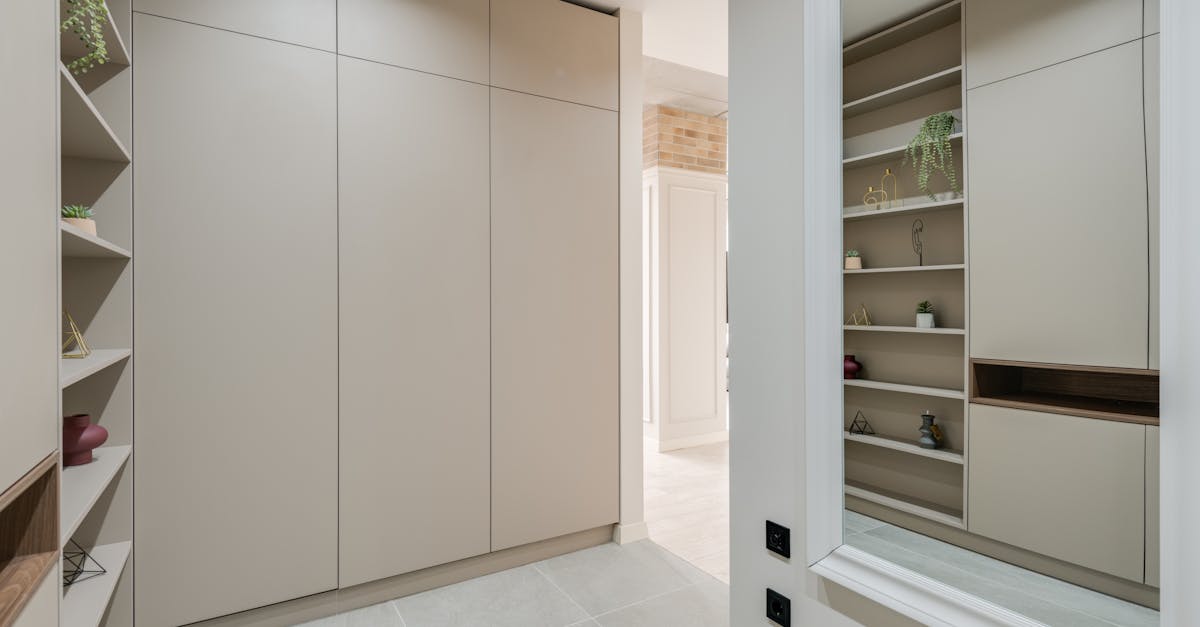
Table Of Contents
Installation Process
The installation process of built-in wardrobes often involves a series of steps that require careful planning and measurement. Customisation is a key feature, with various design options available to maximise space efficiency. Homeowners typically consult with professionals to ensure accurate dimensions and structural integrity. These wardrobes are often fitted directly into the wall, which can entail additional considerations like wall studs and ventilation.
Standalone closets, on the other hand, offer a simpler installation process. These units can be placed almost anywhere in the room without the need for extensive alterations. Homeowners can choose from pre-manufactured options that require minimal assembly or opt for DIY projects. The flexibility of standalone closets appeals to those looking for a quick and less invasive solution for their storage needs.
Timeframes and Complexity
The installation of built-in wardrobes typically involves a more complex process compared to standalone closets. These wardrobes are custom-fitted into the existing structure of a room, requiring precise measurements and possibly modifications to the wall. Installation may take longer due to the need for design planning, sourcing materials, and professional installation. Homeowners often face additional challenges such as coordinating with tradespeople and ensuring that the space allows for the desired layout and functionality.
In contrast, standalone closets usually come pre-manufactured and can be assembled with relative ease. Most DIY enthusiasts find they can complete the installation in a fraction of the time required for built-in wardrobes. However, while the simplicity of standalone units may appeal to those looking for a quick solution, this approach may limit utilising the available space effectively. A built-in wardrobe offers the advantage of being tailored to fit the specific dimensions of a room, maximising storage while remaining aesthetically integrated into the home’s design.
Maintenance and Durability
Built-in wardrobes often boast superior durability due to their permanent installation and the materials used in their construction. These wardrobes typically utilise high-quality wood or MDF, which can withstand the wear and tear of daily use. Their design also allows them to maximise space efficiently, reducing the chances of structural damage that can occur with standalone closets. In contrast, standalone closets may experience stability issues over time, especially if they are not properly anchored or if they rely heavily on lightweight materials.
Maintenance requirements vary significantly between built-in wardrobes and standalone closets. Built-in wardrobes generally need less frequent upkeep, as they are designed to be integrated into the room's architecture. Dusting and occasional polishing are usually sufficient to keep them looking new. Standalone closets, however, often require more attention, especially if they are made from softer materials that can scratch or dent easily. This difference in maintenance can influence a homeowner's decision, factoring in the time and effort they are willing to invest in keeping their storage solutions in good condition.
Long-term Care
The long-term care of built-in wardrobes requires regular maintenance to ensure their functionality and appearance remain intact. These wardrobes are often integrated into the home’s structure, which can make repairs more complicated compared to standalone closets. Keeping the materials clean and addressing any signs of wear promptly can prevent more significant issues down the line. Simple tasks, such as lubricating drawer slides and ensuring sliding doors operate smoothly, are crucial for efficient long-term use.
In contrast, standalone closets generally have fewer maintenance demands since they are freestanding units. However, they may require more frequent checks for stability and wear, particularly if moved multiple times to different locations. While built-in wardrobes can offer aesthetic cohesion with your home, the commitment to their upkeep is essential for preserving their value and longevity. Regular inspections and attention to detail will help maintain the overall integrity of the built-in design.
Impact on Property Value
When considering the impact on property value, built-in wardrobes are often seen as a desirable feature. These installations can create a polished, seamless look that appeals to potential buyers. Their integration into the room can offer a sense of spaciousness, making the home more attractive during viewings. This appeal can contribute positively to the overall marketability of a property.
Standalone closets, while offering flexibility in placement and design, may not have the same intrinsic value as built-in wardrobes. While they can add storage, they lack the custom appeal that built-ins provide, which can lead buyers to perceive them as an afterthought rather than a well-integrated element of the home. For many buyers, particularly those looking for modern aesthetics and efficient use of space, built-in wardrobes can significantly enhance the property’s perceived worth.
Real Estate Considerations
When considering the impact of storage solutions on property value, built-in wardrobes typically offer distinct advantages. Potential buyers often appreciate the seamless design and functionality that these installations provide. A well-designed built-in wardrobe can enhance the overall aesthetic of a bedroom, making the space feel more organised and premium. Real estate agents frequently highlight these features, recognising that customisation and efficient use of space can attract favourable attention from prospective buyers.
On the other hand, standalone closets may appeal to different buyer preferences and can offer flexibility in interior design. Their mobility allows homeowners to rearrange their spaces without being confined to a fixed layout. However, in markets where housing demand is high, the lack of built-in wardrobes might lower a property's allure. Ultimately, the choice between built-in wardrobes and standalone closets may influence not just personal satisfaction but also long-term investment potential.
FAQS
What are the main differences between built-in wardrobes and standalone closets?
Built-in wardrobes are custom-designed and installed into the walls of a room, offering a seamless look and maximised space. Standalone closets, on the other hand, are freestanding furniture pieces that can be moved and rearranged, providing flexibility and variety in design.
Which option is more cost-effective, built-in wardrobes or standalone closets?
Generally, standalone closets tend to be more cost-effective as they often require no installation costs and can be purchased off the shelf. Built-in wardrobes usually involve higher costs due to custom design and installation.
How does the installation process differ for built-in wardrobes and standalone closets?
The installation of built-in wardrobes is typically more complex and time-consuming, requiring professional help for proper fitting. Standalone closets, however, are usually ready to use immediately after purchase, with minimal setup needed.
Which type of wardrobe requires more maintenance?
Built-in wardrobes may require less maintenance in terms of moving parts, as they are designed to last longer and integrate with the home's structure. Standalone closets might require more cleaning and care, especially if they are made from materials that wear over time.
Do built-in wardrobes add more value to a property compared to standalone closets?
Yes, built-in wardrobes can enhance the overall aesthetic and functionality of a home, potentially increasing property value. Real estate agents often recommend built-in options for their appeal to prospective buyers.
